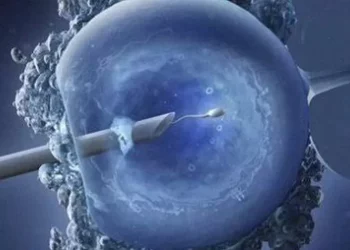Chlamydia is a common sexually transmitted infection (STI) caused by the bacterium Chlamydia trachomatis. This infection is particularly concerning due to its often silent nature. Many individuals who are infected show no symptoms. If left untreated, chlamydia can lead to serious reproductive health issues, including infertility. This article explores how chlamydia can cause infertility, the timeline of infection, and measures to prevent and treat this condition.
See Also: Can Men Become Infertile from Chlamydia?
Understanding Chlamydia and Its Impact on Fertility
Chlamydia is one of the most prevalent STIs worldwide. It primarily affects the genital tract, but it can also infect the rectum, throat, and eyes. The bacterium Chlamydia trachomatis targets the mucous membranes of these areas, causing inflammation and damage.
The Silent Infection
One of the major challenges with chlamydia is its asymptomatic nature. Up to 70% of women and 50% of men with chlamydia do not experience noticeable symptoms. This silence allows the infection to persist undetected and untreated, leading to complications over time.
Mechanism of Infertility
Infertility due to chlamydia primarily results from pelvic inflammatory disease (PID) in women. PID is a serious infection of the female reproductive organs, including the uterus, fallopian tubes, and ovaries. When chlamydia spreads to these areas, it causes inflammation and scarring. Scar tissue can block the fallopian tubes, preventing sperm from reaching the egg or impeding the fertilized egg’s journey to the uterus.
In men, chlamydia can infect the epididymis, causing epididymitis. This inflammation can lead to blockages or reduce the quality and motility of sperm, contributing to infertility.
Timeline of Chlamydia Infection and Infertility
Determining the exact timeline for chlamydia to cause infertility is complex. It depends on several factors, including the duration of untreated infection, the individual’s immune response, and the presence of any co-existing reproductive health issues.
Initial Infection and Early Stages
Upon exposure to chlamydia, the bacteria begin to multiply and infect the mucous membranes. The incubation period for chlamydia is typically between one to three weeks after exposure. During this time, an individual may start experiencing mild symptoms such as burning during urination, unusual discharge, or mild abdominal pain. However, many individuals remain asymptomatic.
Progression to Pelvic Inflammatory Disease
If untreated, chlamydia can ascend from the cervix to the upper reproductive tract, leading to PID in women. This progression can occur within a few weeks to several months after the initial infection. The risk of developing PID increases with repeated or persistent chlamydia infections. PID can cause significant damage to the reproductive organs in a short period. Studies have shown that approximately 10% to 15% of women with untreated chlamydia develop PID.
Long-Term Damage and Infertility
The long-term damage from untreated chlamydia is cumulative. Repeated infections and ongoing inflammation can lead to more extensive scarring and blockages in the reproductive tract. Research indicates that the risk of infertility increases with the number of PID episodes. After one episode of PID, a woman’s risk of infertility is approximately 8%. This risk increases to 20% after two episodes and nearly 40% after three or more episodes.
Factors Influencing the Timeline
Several factors influence how quickly chlamydia can lead to infertility:
Duration of Infection: The longer chlamydia remains untreated, the higher the risk of developing complications that can lead to infertility.
Frequency of Infections: Repeated chlamydia infections cause more damage to the reproductive organs.
Immune Response: Individual immune responses vary, with some people experiencing more severe inflammatory reactions.
Co-existing Conditions: Other reproductive health issues, such as bacterial vaginosis or other STIs, can exacerbate the damage caused by chlamydia.
Access to Healthcare: Early detection and treatment significantly reduce the risk of long-term complications.
Symptoms of Chlamydia and PID
Identifying chlamydia and PID early is crucial for preventing infertility. While many individuals are asymptomatic, recognizing the possible signs can prompt timely medical intervention.
Symptoms of Chlamydia in Women
- Unusual vaginal discharge
- Burning sensation during urination
- Pain during intercourse
- Bleeding between periods or after sex
- Lower abdominal pain
Symptoms of Chlamydia in Men
- Penile discharge
- Burning sensation during urination
- Pain and swelling in one or both testicles
- Rectal pain, discharge, or bleeding (if infected rectally)
Symptoms of PID
- Severe lower abdominal pain
- Fever
- Unusual vaginal discharge with an unpleasant odor
- Pain or bleeding during intercourse
- Burning sensation during urination
- Irregular menstrual bleeding
Diagnosing Chlamydia and PID
Timely diagnosis is essential for preventing the complications of chlamydia, including infertility. Diagnostic methods include:
Nucleic Acid Amplification Tests (NAATs)
NAATs are the most sensitive and specific tests for detecting chlamydia. They can be performed on urine samples or swabs from the cervix, vagina, urethra, rectum, or throat. NAATs detect the genetic material of Chlamydia trachomatis, confirming the presence of the infection.
Culture Tests
Culture tests involve growing the bacteria from a sample taken from the infected site. While less commonly used due to lower sensitivity compared to NAATs, cultures can still be useful, especially in cases of suspected antibiotic resistance.
Physical Examination and Imaging
For diagnosing PID, a physical examination by a healthcare provider is essential. This may include a pelvic exam to check for tenderness in the reproductive organs. In some cases, imaging tests such as ultrasound or laparoscopy may be used to assess the extent of inflammation and damage.
Treatment of Chlamydia and PID
Effective treatment of chlamydia and PID can prevent infertility. The standard treatment for chlamydia involves antibiotics. Early treatment reduces the risk of developing PID and other complications.
Antibiotic Treatment
The most commonly prescribed antibiotics for chlamydia include azithromycin and doxycycline. Azithromycin is typically given as a single dose, while doxycycline is taken twice daily for seven days. It’s crucial for both sexual partners to receive treatment to prevent re-infection.
For PID, a combination of antibiotics is often prescribed to cover a broad range of potential bacterial pathogens. Treatment may include oral antibiotics, intramuscular injections, or intravenous antibiotics for severe cases.
Follow-Up and Partner Notification
Follow-up testing is recommended three months after treatment to ensure the infection has been eradicated. Additionally, notifying sexual partners and encouraging them to get tested and treated is crucial to prevent the spread of chlamydia and re-infection.
Prevention of Chlamydia and Its Complications
Preventing chlamydia infections is key to reducing the risk of infertility. Public health measures and individual practices both play a role in prevention.
Safe Sexual Practices
Using condoms consistently and correctly during sexual activity significantly reduces the risk of chlamydia transmission. Limiting the number of sexual partners and engaging in mutually monogamous relationships with partners who have been tested and are free of STIs also lowers the risk.
Regular Screening
Regular screening for chlamydia is essential, especially for sexually active individuals under the age of 25 and those with multiple sexual partners. Early detection through routine screening allows for prompt treatment and reduces the risk of complications.
Education and Awareness
Increasing awareness about chlamydia and its potential consequences is vital for prevention. Public health campaigns, educational programs in schools, and healthcare provider counseling can help individuals understand the importance of safe sexual practices and regular testing.
Addressing the Emotional and Psychological Impact
The diagnosis of chlamydia and the possibility of infertility can be emotionally and psychologically challenging. Individuals may experience anxiety, guilt, or depression. It is important to address these feelings and provide support.
Counseling and Support Services
Access to counseling and support services can help individuals cope with the emotional impact of a chlamydia diagnosis and the potential threat to fertility. Support groups, either in person or online, can provide a sense of community and shared experiences.
Fertility Counseling
For those who have experienced infertility due to chlamydia, fertility counseling and treatment options are available. Reproductive endocrinologists and fertility specialists can offer guidance on assisted reproductive technologies (ART) such as in vitro fertilization (IVF) and other treatments that may help individuals achieve pregnancy.
Research and Future Directions
Ongoing research is crucial for better understanding and managing chlamydia and its impact on fertility. Studies aim to develop more effective diagnostic methods, treatments, and preventive measures.
Vaccine Development
One of the most promising areas of research is the development of a vaccine against Chlamydia trachomatis. A successful vaccine could significantly reduce the incidence of chlamydia and its complications, including infertility.
Improving Diagnostics
Advancements in diagnostic technologies aim to make testing for chlamydia more accessible, accurate, and cost-effective. Point-of-care tests that provide rapid results could enhance early detection and treatment.
Understanding Immunity and Resistance
Research into the immune response to chlamydia and the development of antibiotic resistance is ongoing. Understanding these aspects can lead to improved treatment protocols and the development of new therapeutic options.
Conclusion
Chlamydia is a prevalent and often silent infection that can have serious consequences for reproductive health, including infertility. The timeline for chlamydia to cause infertility varies, depending on the duration of untreated infection and individual factors. Early detection through regular screening, prompt treatment with antibiotics, and preventive measures such as safe sexual practices are crucial in reducing the risk of infertility. Addressing the emotional impact of a chlamydia diagnosis and providing support and counseling can help individuals cope with the potential threat to their fertility. Ongoing research and future advancements hold promise for better management and prevention of chlamydia and its complications.
Related Links:



























